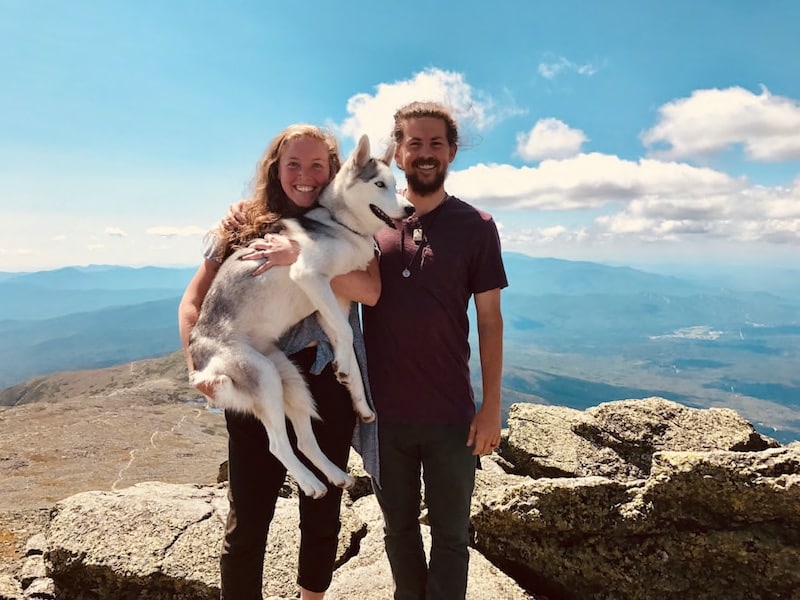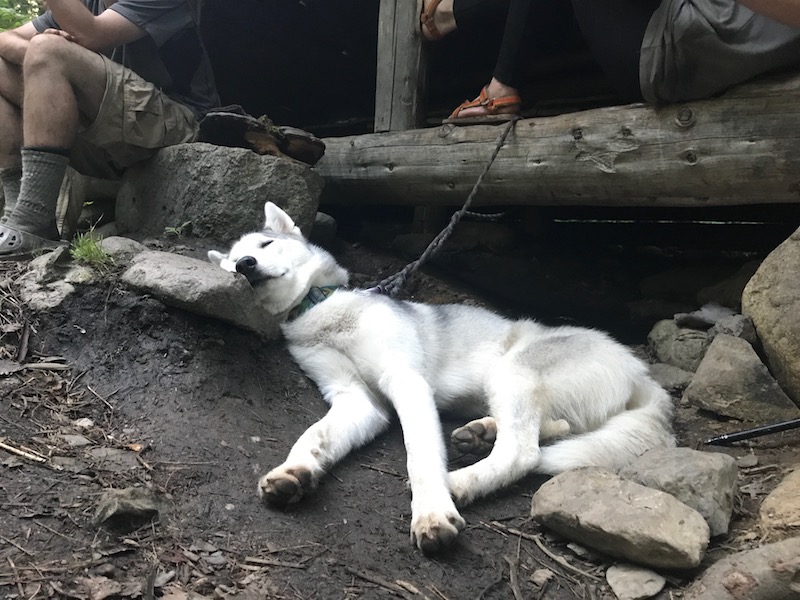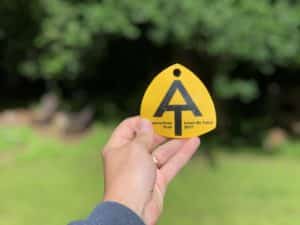DOG BLOG: PART ONE
Recently a lot of you all have been asking questions about what it was like to embark on a long-distance hike with a dog in tow. Some of you are planning a future thru-hike and want to know the logistics, some of you are just curious what kind of challenges we faced by having a furry friend accompany us…
We appreciate the interest and are hoping to meet the demand!
I remember from our early stages of Appalachian Trail research that there is surprisingly little information published about what it is like to thru-hike with a dog. In fact, most of the information out there was pretty discouraging. And, now that we are on the other side of it, fairly misguided as well.
To be honest with all of you, we got pretty fed up with the discouraging words we were finding and decided to kind of ‘wing it’ when it came to taking Pneuma cross-country with us. Was this the right thing to do? Probably not. But we recognized that our experience with Pneuma on trail would be inherently different that anyone else’s experiences because she is what is deemed a “working breed.” So, we did what we knew to do and figured the rest out as we moved forward.
Anyways, I’ve been wanting to get our information from experience published here for you all, so alas… Now commences the “Dog Blog” series!
This is part one of three (maybe more) installments and it is intended to be a somewhat broad introduction to taking a dog on Trail.
OPINIONS AND STATISTICS
A couple of things up front:
Don’t be surprised when people have a ton of derogatory and negative opinions to share about you setting out on Trail with a dog.
We weren’t expecting it in the slightest, so that was pretty jarring for us. Some opinions were shared over social media, some were blurted out right to our faces while we were walking and no matter the form, it was flabbergasting each time. We heard a lot of “so y’all are just making her carry all weight, huh” or “oh you poor dog…” along the way and it got old really fast.
The most important thing you can do to help protect your mind in those moments is to prepare yourself and your dog as much as possible. We’ll be getting into the hairy details (pun intended) of what that meant for us in a later post, but seriously – the better you know how your dog acts on trails and on extended backpacking trips, the better you will be able to combat negativity.
We finally reached the point where we could just laugh it off when someone shared a snarky comment with us because, well, the truth of the matter is that about 95% of the hikers we encountered loved Pneuma. Most could tell that she was extremely happy to be on Trail with her owners 24/7 and that she was remaining the healthiest a dog can be on a cross-country trek.
As dog owners setting out on a thru-hike, we are kind of trying to achieve something where the odds are not ever in our favor. The statistic we have heard is that only 25% of dogs that start the Appalachian Trail actually finish it, but I full-heartedly believe that if you are responsible and sensitive to your dog’s needs, there won’t be any issues.
So, don’t go into this journey as naïve as Gibberish and I did.
People can be rude, they can be insensitive and opinionated on something that they have no context for.
But that is the key: they have no context.
They don’t know you. They don’t know your furry companion. They don’t know how you trained before you set out or how often you might be having a vet double-check that everything is A-OK.
So, shake it off, my friends.
HIKE YOUR DOG’S HIKE
If you are involved with the thru-hiker world to any extent, you’ve probably heard the infamous motto “hike your own hike”.
I’m not aware of the history behind the phrase–who coined it or exactly why it was brought about–but, I did say those words countless times while we were out in the backcountry.
You see, for some unknown reason there is a percentage of long distance hikers out there who feel the need to constantly share their “my way or the highway” opinions with you just to let you know that they are superior in all things, no matter what. I mentioned these friends a bit earlier in this blog, but man does this group extend way further than just thoughts on dogs.
Though it is extremely frustrating and seemingly against the thru-hiker community to do so, these individuals usually do not care how their actions or words are being received. But it’s in those moments, when someone tells you that you’re a lazy ___ for slack-packing a hard section or that you obviously didn’t do much research before you left, that you keep your harsh words and hand gestures to yourself and just shrug while saying “hike your own hike, man.”
The biggest lesson that Gibberish and I learned on our journey is how that phrase didn’t really do our hike justice.
I hope that for those of you that know us personally or that followed us along our journey, it is obvious that we consistently put Pneuma above ourselves. But, if it wasn’t obvious or if you are new to our world, let me tell you what reality is like on Trail with a pup.
THRU-HIKING REALITIES WITH A DOG
- When your pal is tired and doesn’t feel like hiking another inch, he or she will likely plop on down in the middle of the Trail and that is where you will be staying put until they are rested and ready to get walking again
- If you are strapping a backpack on your pup, you will most likely be performing a nice little diddy around camp every morning because they will do anything to dodge that harness in your hands
- Oh, and it is very likely that you will be carrying said backpack up long inclines when your pup is just too exhausted (or too big of a diva) to do it him/herself
- Don’t get your hopes too high on staying in certain towns or eating at specific restaurants because, well, not everywhere will be as fond of your creature as you are
- If the weather is terrible for days upon days and all you want to do is sleep inside of a dry shelter instead of your soggy, wet tent – don’t plan on it because, surprisingly enough, not many tired hikers want a wet dog on their down sleeping bags
- If your companion shows any signs of illness or thorough exhaustion, you will not be hiking for the amount of time it takes for them to be themselves again
The list is so, so long – but you probably get the point.
A LESSON IN SELFLESSNESS
It is the most important thing that you could do, the true key to success in your dog completing the Trail, for him or her to always come first.
I know it probably sounds like common sense, but when you have surpassed true exhaustion and you can barely even think about what you just saw during the day, it becomes really difficult to put an animal before yourself.
It’s really easy to think, “well he/she is a dog and dog’s are born for stuff like this,” as a justification along the way, but I promise it’ll be detrimental for your hike in the long run.
You aren’t hiking any one else’s hike, you really aren’t even hiking your own hike – you will be hiking your dog’s hike every single day.
For us, that ended up meaning many unexpected zero days or lots of unexpected dollars spent or intently observing her behavior to be sure we knew if anything was going on, but none of that mattered in the long run because she made it.
And that was our number one priority from the get-go.






